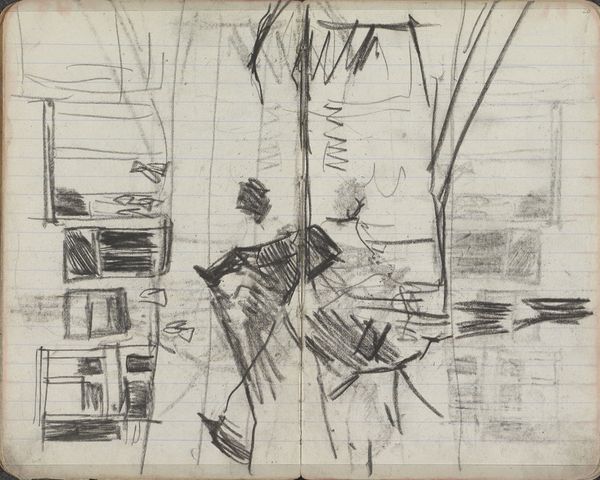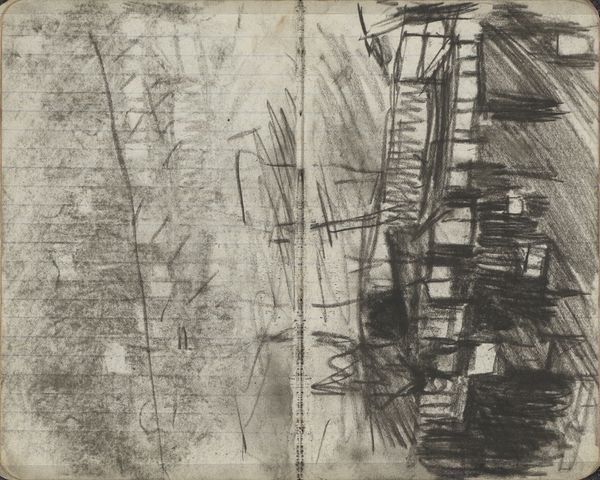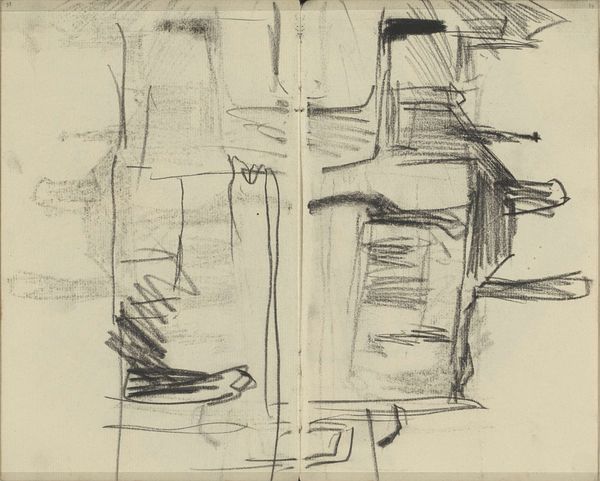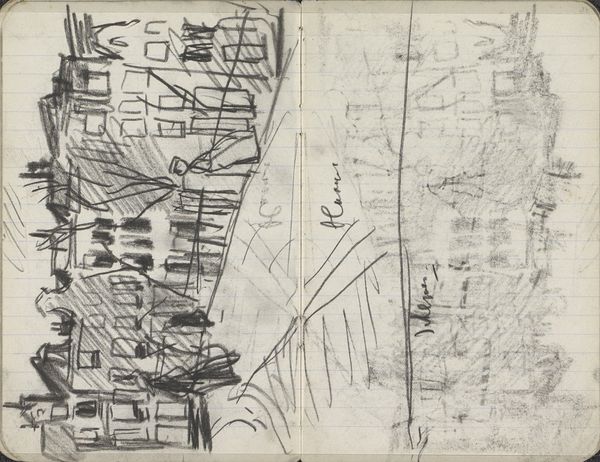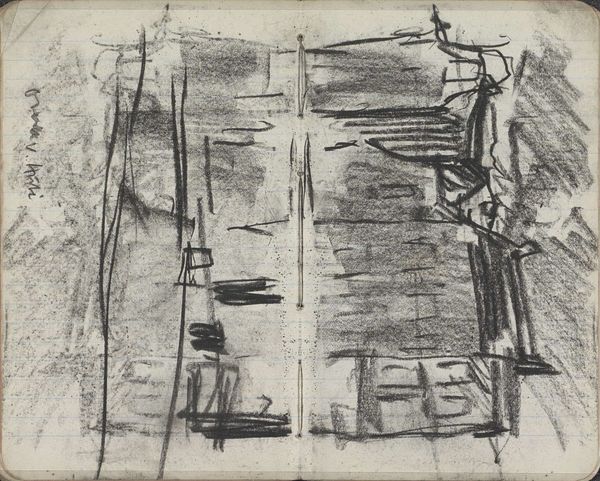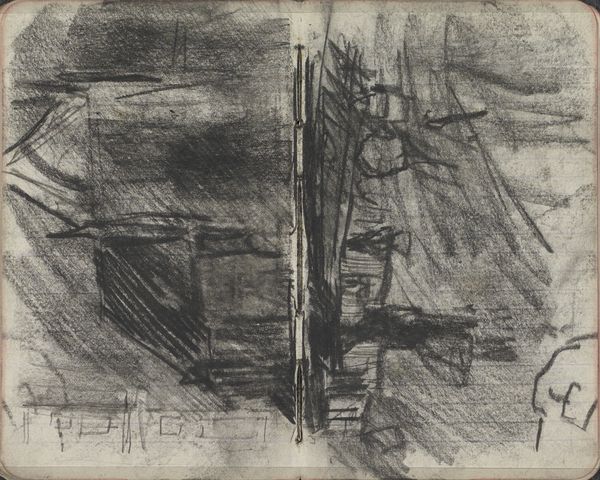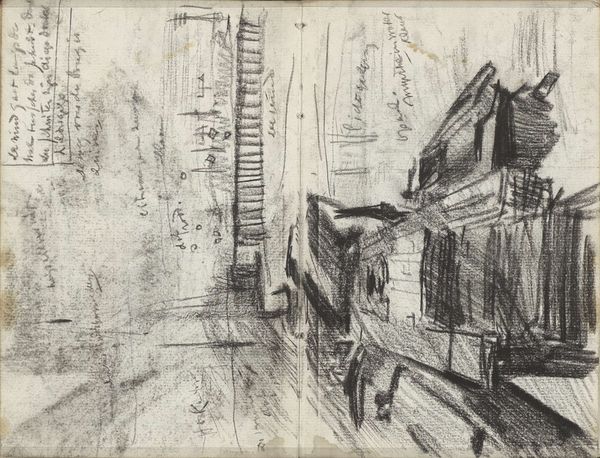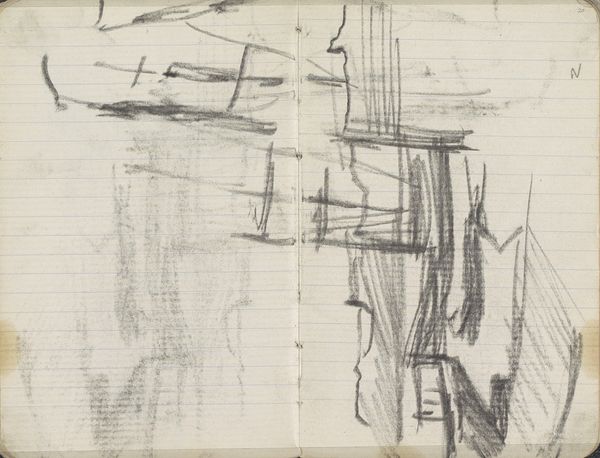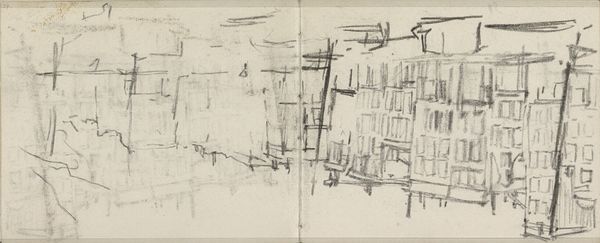
Gezicht op de Prinsengracht te Amsterdam ter hoogte van de Reesluis 1893 - 1894
0:00
0:00
Copyright: Rijks Museum: Open Domain
Curator: Here we have George Hendrik Breitner’s pencil and graphite drawing, "Gezicht op de Prinsengracht te Amsterdam ter hoogte van de Reesluis," created around 1893-1894. Editor: The energy of this piece is captivating. Even in its unfinished state, there's such immediacy and mood conveyed, especially the figure sketched quickly on the left-hand page. There is a very stark duality in both mood and construction as the sketched out landscape barely leaves an impression. Curator: Breitner was fascinated by the city of Amsterdam and its working class. We can see that fascination in this sketch as the sketchbook style is raw and unedited, suggesting an artist quickly attempting to convey not what is, but what it felt like. Editor: Absolutely. There’s a performative aspect too, though. Breitner presenting a vision of himself performing masculinity, class and nationality while simultaneously capturing a moment. Were the working classes that populate the city really there in all their complexities and nuance, or were they simply part of a story Breitner created around the experience of being? Curator: It raises questions about representation, for sure. This piece and the position of the "every man" can also be considered in conversation with late nineteenth-century social anxieties in Amsterdam as it transformed into a modern metropolis. Editor: So the sketch then acts as both a record and a statement? With this piece existing within that framework, the viewer then plays a crucial role. They must choose, in this duality, to interpret Breitner's position. It becomes a work deeply rooted in power dynamics and social commentary as we dissect not just the image but also the artist's intent. Curator: Considering the period and his oeuvre as a whole, I would say it's vital to analyze it through lenses of class and social dynamics to understand Breitner's own position and perspective within Amsterdam's societal shifts. It’s a piece that demands interrogation and challenges our assumptions about witnessing and artistic expression. Editor: Agreed, the conversation alone opens doors to crucial socio-political dialogues of not just Breitner, or even Amsterdam at the time, but allows us to re-evaluate the role of modern urban artistic expression.
Comments
No comments
Be the first to comment and join the conversation on the ultimate creative platform.
